These 25 award-winning photos show just how majestic polar bears are
Matthew Wilson

- Photography competitions around the world have celebrated stunning images of polar bears, while helping to educate the public about these majestic creatures.
- There are an estimated 22,000 to 31,000 polar bears in the world.
- The marine mammals adapted to thrive in the frigid temperatures of the Arctic, but due to climate change affecting their habitats, their way of life is threatened.
- Visit Insider's homepage for more stories.
Everyone loves polar bears. From soft drink commercials to dancing viral memes, they've fascinated us time and time again — and they've captured photographers' hearts too.
Over the years, nature photographers have documented these majestic marine mammals in their natural habitats and have also chronicled the heartbreaking effects climate change has had on their survival. The resulting photographs have been celebrated by wildlife photography competitions such as Nature's Best Photography Awards.
This Earth Day, take a moment to appreciate polar bears with these award-winning photos, as well as facts about them that you may not know.
Read the original article on InsiderDue to the changes in sea ice formation, polar bears were listed in the US as a threatened species in 2008.

Polar bear population is predicted to decline almost a third by the year 2050.
Disruptions in their food supply may increase polar bears' interactions with humans as they travel south.
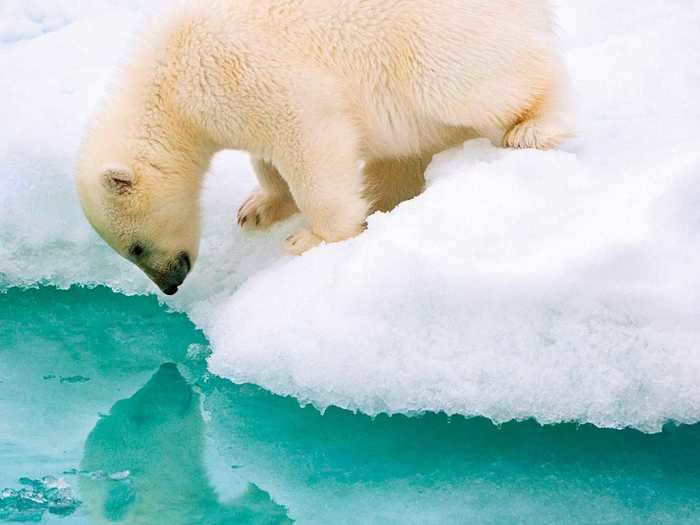
The greatest number of polar bear attacks occurred during 2010-2014, a period characterized by slower sea ice formations.
Climate change is causing Arctic sea ice to melt sooner and freeze later, affecting polar bears' feeding and breeding habits.
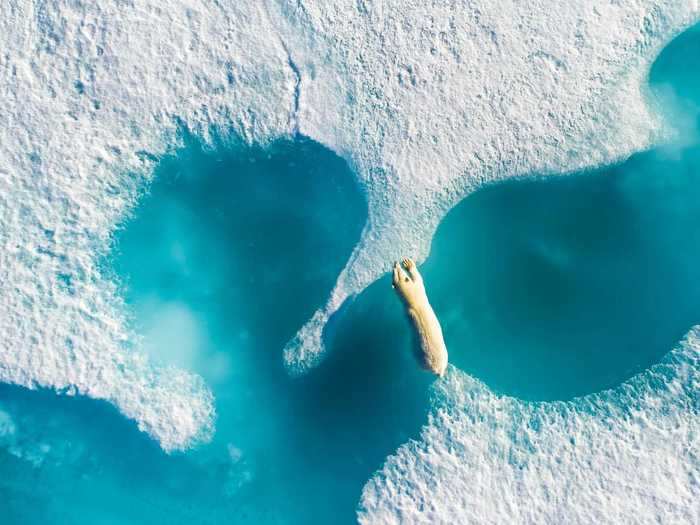
"Sea ice really is their platform for life," said Kristin Laidre, a researcher at the UW's Polar Science Center. "They are capable of existing on land for part of the year, but the sea ice is where they obtain their main prey."
Polar bears are naturally curious creatures who aren't afraid of humans, as evidenced by this photo captured by Roie Galitz.
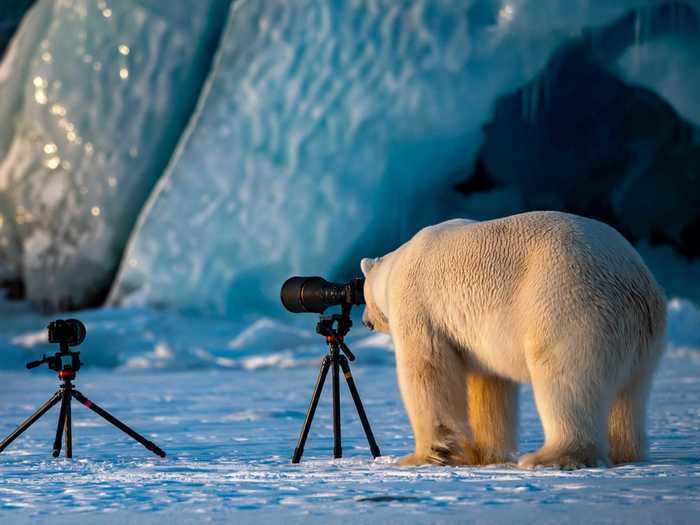
When the polar bear lumbered over to investigate a collection of tripods, the photographers took off.
"We didn't have time to pack all our gear and quickly hopped on our snowmobiles and drove away, leaving our gear behind," Galitz said. "The bear approached the cameras and tried to look through the viewfinder, licked the back of the camera and went away, continuing on his path."
They can swim up to six miles per hour. National Geographic's 2013 Photography Contest Grand Prize winner, Paul Souders, captured a polar bear coming to the surface.
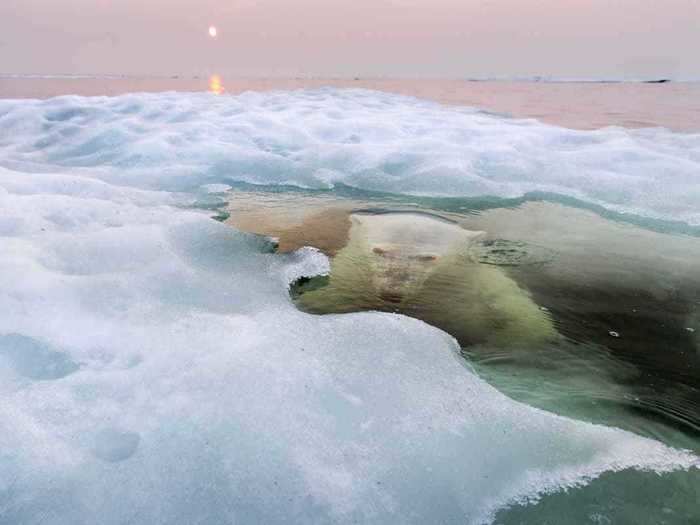
Polar bears love to keep themselves clean and frequently groom after feeding.
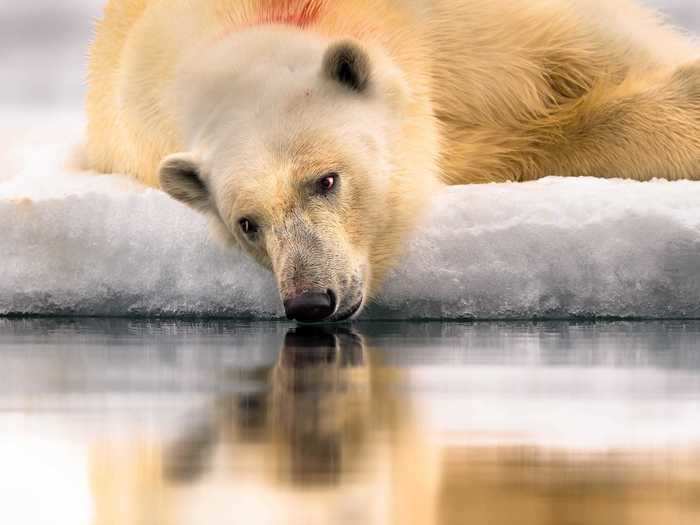
In the summer, they will head into the open water where they will spend upwards of 15 minutes washing themselves. In the winter, they will rub themselves against the snow to stay clean and cool off.
Johansen won first place in the 2016 Memorial Maria Luisa competition with this serene image.
A polar bear can eat 15 to 20% of its own body weight in food. Polar bears typically hunt and eat seals in the Arctic.
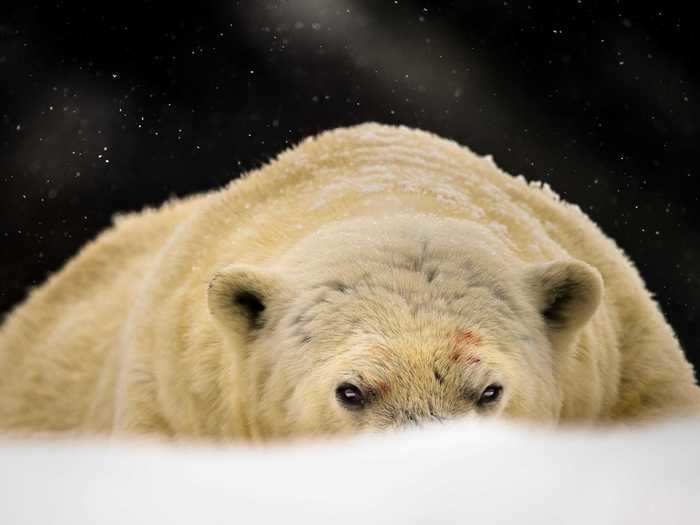
Polar bears often communicate with each other through their noses. Photographer Jon Cornforth got up-close with one in this image.

If a polar bear wants food from another after a hunt, it will approach cautiously and circle the food before touching noses with the hunter to signify it comes in peace.
Polar bears, like this one captured by Joshua Holko, love to take naps and do so frequently to conserve energy.
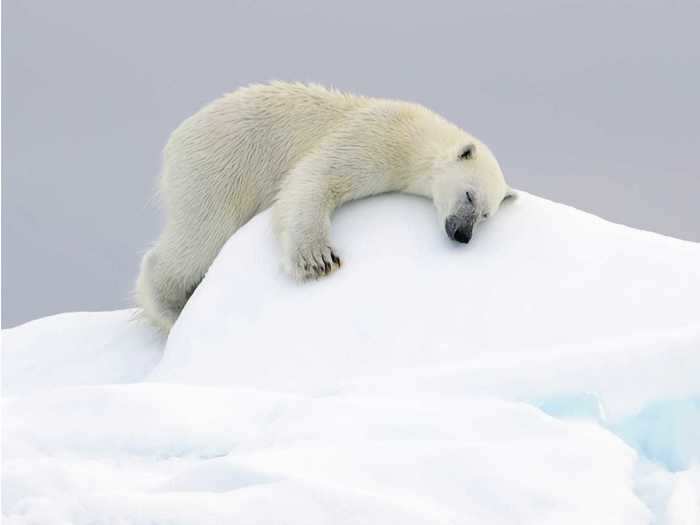
During the summer, polar bears will use patches of ice as pillows.
Polar bears usually sleep during the day because of their hunting patterns for seals.
Aggressive fights between polar bears do occur during mating season or food scarcity.
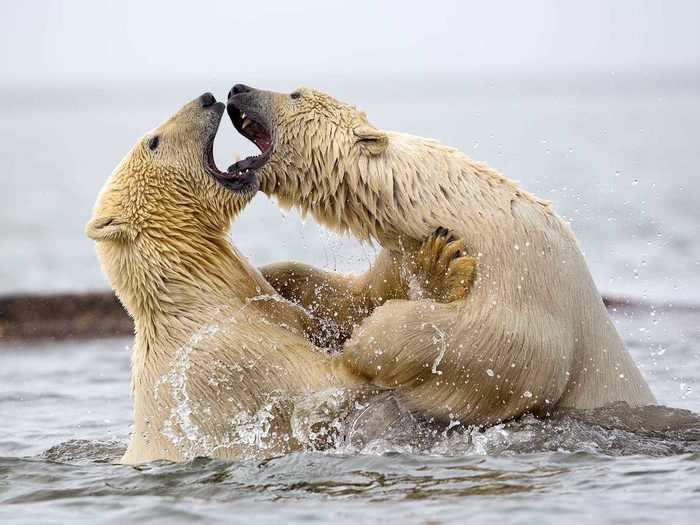
Mock fights between both adult bears and cubs are useful as a way for bears to sharpen both their fighting and survival skills should they be required to fight for real.
Photographer Diane McAllister captured two polar bears fighting.
Adult polar bears engage in a form of roughhousing, mock fighting each other as a form of entertainment.
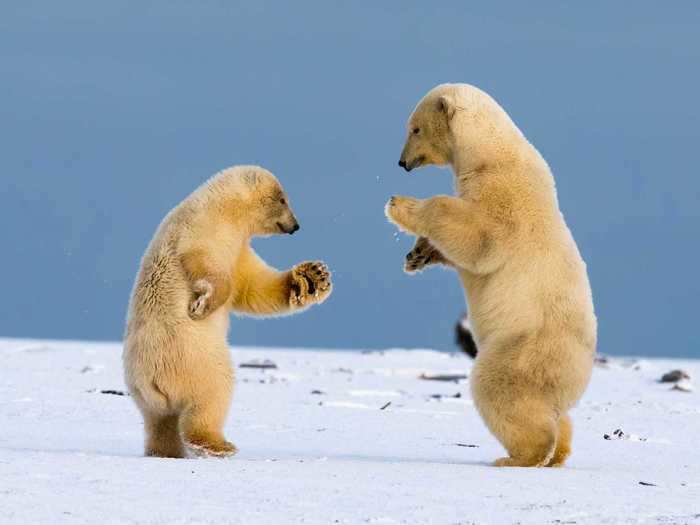
Two bears scrap in this highly honored image by Shayne McGuire.
Polar bears will move their heads from side to side and stand on their hind legs with their front paws hanging when they want to play.
Female polar bears raise their cubs alone and are extremely protective of their young — and as this photo by Debra Garside shows, it's a mutual affection.
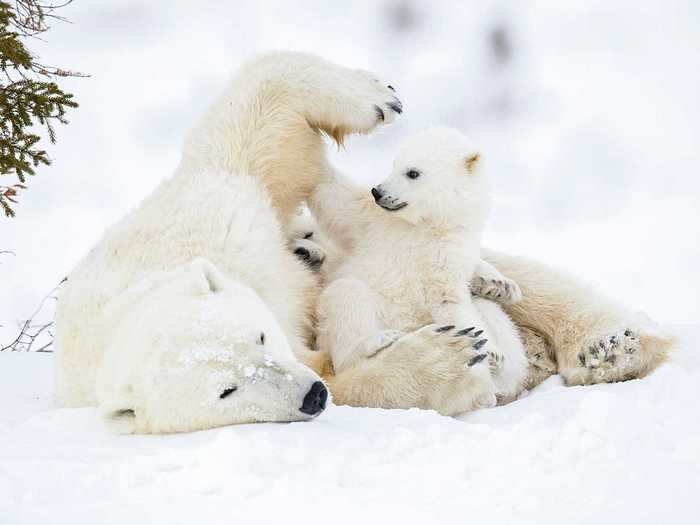
Male polar bears have almost no role in their off-springs' lives and have been known to kill young polar bear cubs.
Mother and cubs emerge from their dens in the spring when the cub is strong enough to survive a trip across the sea ice.
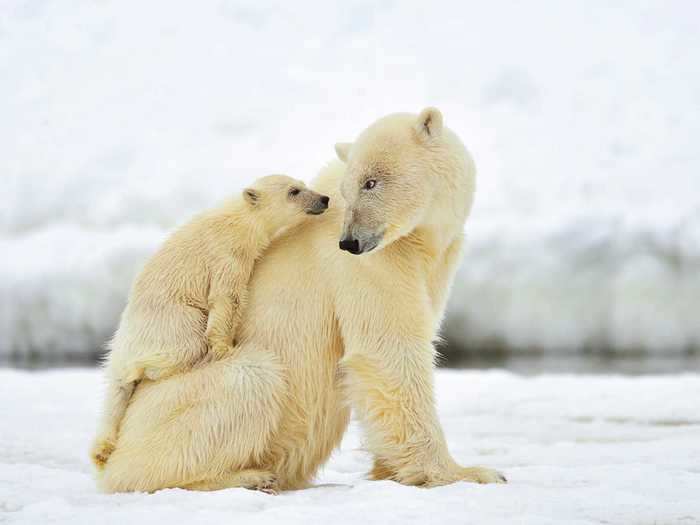
Cubs typically live with their mother for 28 months during which they learn skills they will need for survival.
In the winter, female polar bears will dig dens for themselves and their soon-to-be cubs. Here, a mom captured by Daisy Gilardini cuddles her cubs in the snow.
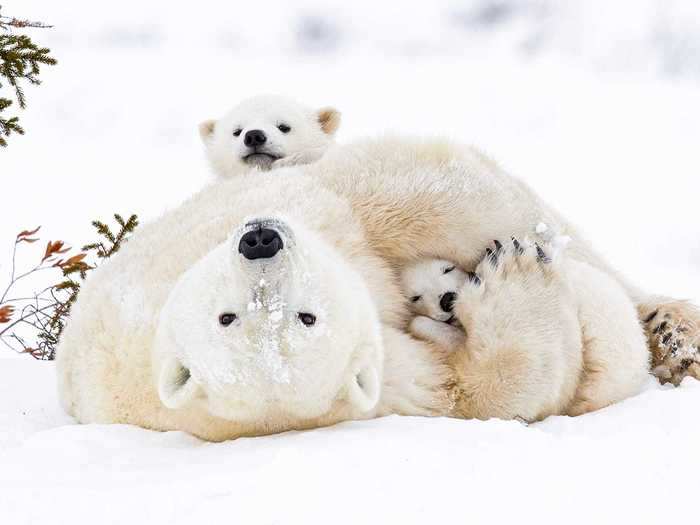
Dens provide protection for mother and cub during their most vulnerable moments. Polar bears commonly give birth to twins.
In the spring months, polar bears will mate on the sea ice, but the female doesn't become pregnant until the fall.
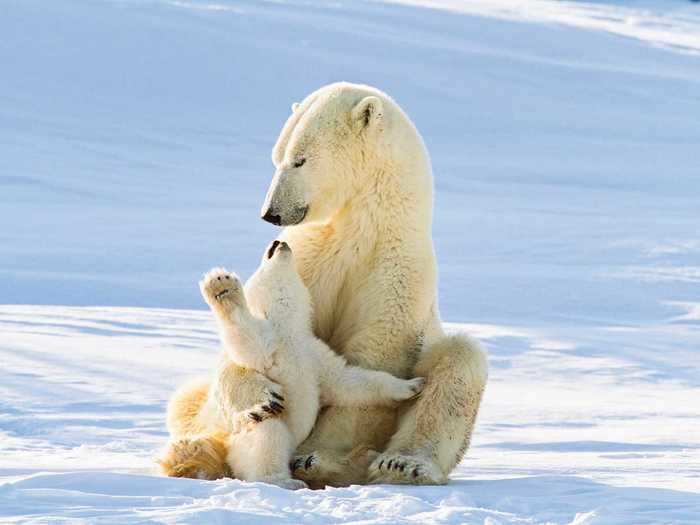
The polar bear's delayed pregnancy allows female bears to gain enough weight to support both themselves as well as their cubs through the long winter.
Pictured, Robert Sabin captured an affectionate mom and cub.
This photo by Joshua Holko of one of the world's estimated 22,000 to 31,000 polar bears was highly honored in Nature's Best Photography Awards.
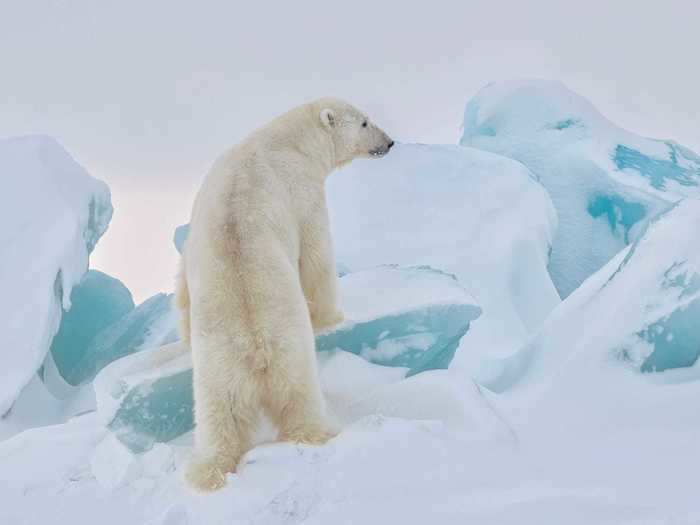
The average life span of a polar bear is 25 to 30 years.
Some of the nicknames given to polar bears over the years have been Lord of the Arctic, old man in the fur cloak, and white sea deer.
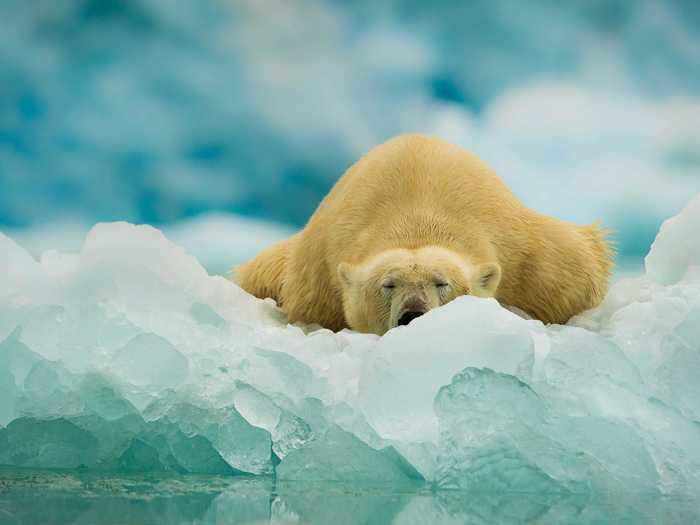
But the scientific name for a polar bear is Ursus maritimus.
This snoozing polar bear, captured by Arnfinn Johansen, probably doesn't mind what you call him, as long as you keep your distance.
When they're born, a polar bear cub weighs about the size of a guinea pig.
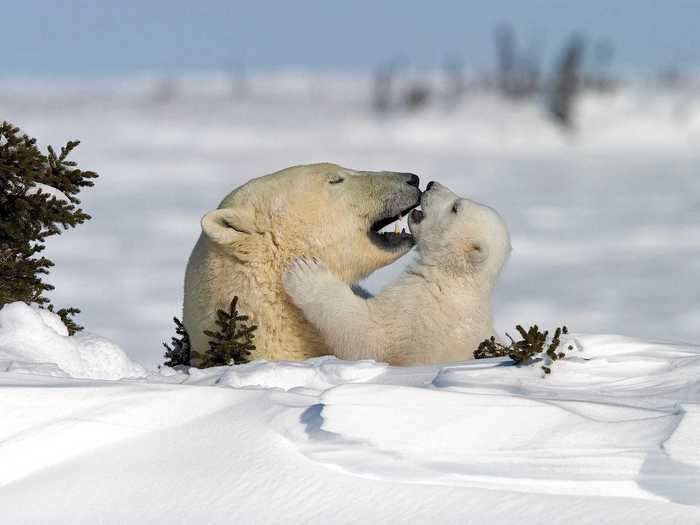
A mom and growing cub play in this grand prize-winning photograph by Thorsten Milse.
A 4-inch layer of fat keeps polar bears warm. This image by Eric Coomes shows one drying off after an icy plunge.

An adult male polar bear can weigh between 750 to 1,300 pounds. Adult females weigh less, between 330 to 650 pounds.
Polar bears travel at around three miles per hour but can accelerate to 24 miles per hour for short bursts. In this photo by Andy Rouse, a polar bear stops to pose for a picture.

Polar bears are similar in speed to a horse, but walking and running expends a greater amount of energy than it would for another animal. A resting bear uses 13 times less energy than one that walks.
A recently grown polar bear may travel hundreds of miles from its mother to establish its own home and area to hunt in.
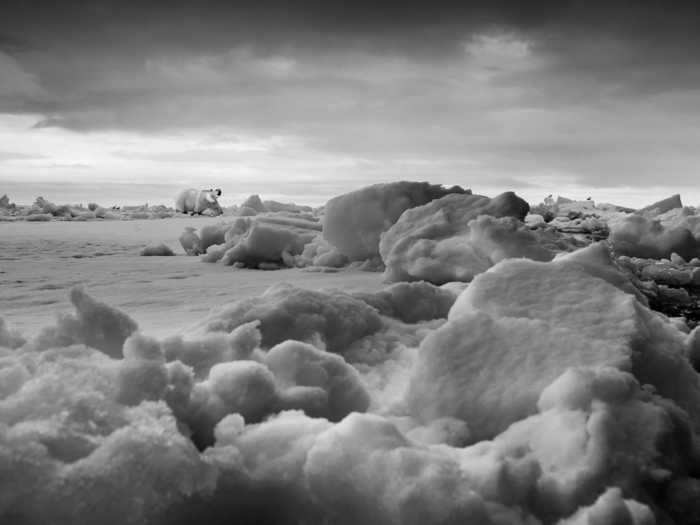
Unlike other animals, polar bears don't have traditional territories following the seasonal changes of both seals and the ice. In the winter, the sea ice expands and during the summer, it recedes.
They have two layers of fur and a thick layer of fat to protect them against the harsh conditions. Photographer Ying Gu captured a mom and cub battling frosty winds.
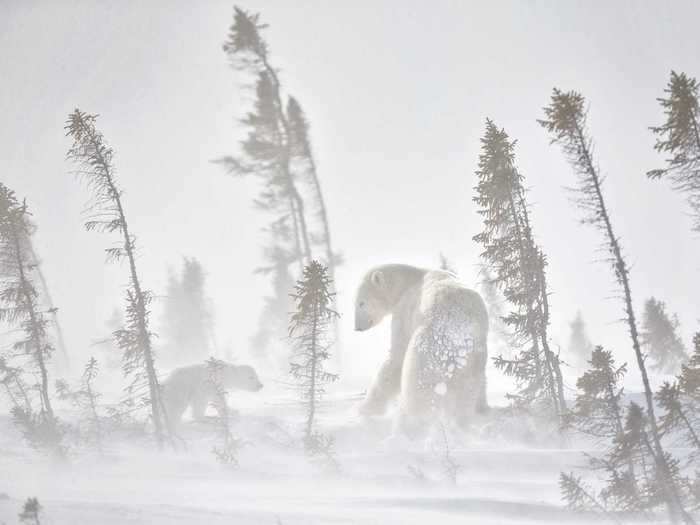
Polar bear fur contains no white pigment. Its color comes from the way light refracts off the fur's unique hollow structure. Their fur causes more problems with overheating than the cold does. They have to be careful not to overexert themselves.
Winter temperatures in the Arctic can be as low as -50 degrees Fahrenheit for weeks on end. In this image, Johansen captured a polar bear traversing its icy home.
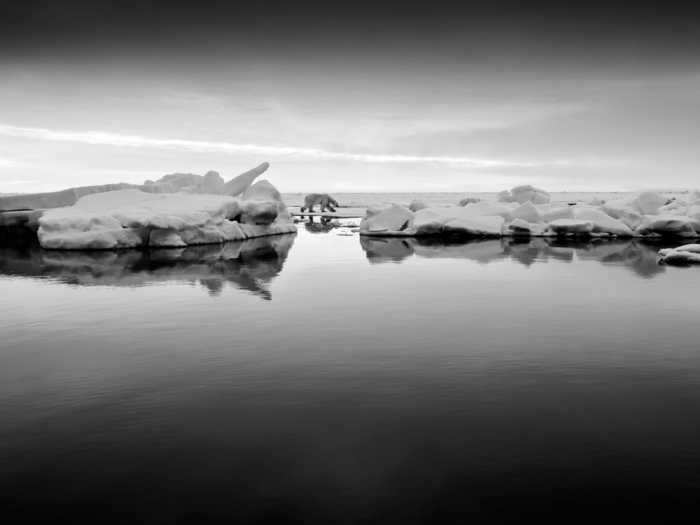
Polar bears not only survive in this frigid winter wonderland but thrive.
Polar bears live in the Arctic circle in five countries. This highly commended image by Arnfinn Johansen shows one polar bear surveying its extreme surroundings.
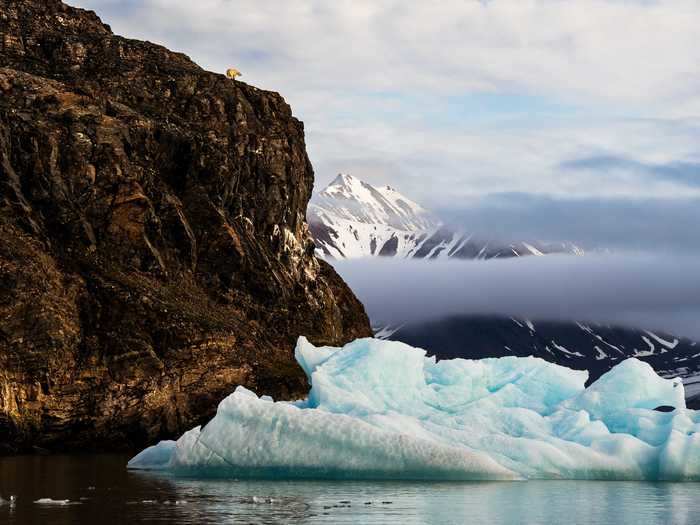
Sixty-nine percent of polar bears live in the northern parts of Canada.
Though people often like to imagine them together, polar bears and penguins actually live on opposite sides of the planet, with penguins living in Antarctica. The word Arctic derives from arktos, the Greek word for bear.
READ MORE ARTICLES ON
Popular Right Now
Popular Keywords
Advertisement